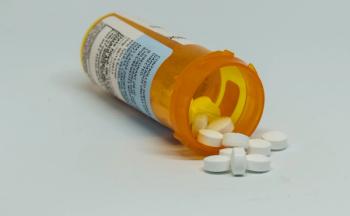
Stimulant Use Appears to Boost Buprenorphine Adherence in Patients with OUD
The findings paint a mixed picture, though, as stimulant use in patients with OUD was also associated with an increased risk of drug poisoning.
People with opioid use disorder (OUD) who are prescribed stimulants face a higher risk of drug-related poisoning, according to a new report, but they are also more likely to adhere to buprenorphine treatment.
The study,
Buprehnorphine is the most commonly prescribed medication to treat OUD, explained corresponding author Carrie M. Mintz, MD, of the Washington University School of Medicine, in St. Louis. Previously published reports suggest the therapy is successful at preventing relapse and reducing rates of opioid overdose and death.
However, when a patient with a substance use disorder (SUD) also has a condition for which stimulants are indicated, such as attention-deficit/hyperactivity disorder (ADHD), physicians face a difficult choice.
“Because stimulants carry the potential for misuse, clinicians may be reluctant to prescribe them to persons with co-occurring SUD owing to concern that the stimulants may increase the risk of SUD relapse,” Mintz and colleagues wrote.
The evidence on that question is limited and generally inconclusive. For instance,
Given the lack of clarity regarding the impact of stimulants among patients with OUD, Mintz and colleagues decided to analyze administrative claims data to see whether patterns in outcomes emerged.
The data, which included both commercial and Medicaid patients, covered the years 2006 to 2016, and included patients between the ages of 12 and 64 who had been diagnosed with OUD, had been prescribed buprenorphine, and had at least 1 drug-related poisoning event.
The database yielded 22,946 people with a mean age of 32.8 years, 50.3% of whom were men. For the purposes of the analysis, the investigators translated the patient population into person-days, coming up with 13,778,567 person-days of observation.
Comparing person-days when patients were on stimulants to those when patients were not taking stimulants, the investigators found stimulant treatment days were associated with a 19% increase in the risk of drug-related poisoning (odds ratio [OR] 1.19; 95% confidence interval [CI] 1.06-1.34). Yet, the opposite was true for when patients were adhering to buprenorphine treatment. On days when patients were taking buprenorphine, there was a 38% lower risk of drug poisoning compared to non-treatment days (OR 0.62; 95% CI, 0.59-0.65).
“Although the risk of drug-related poisoning was modest, clinicians should be cognizant of this potential safety risk when considering whether to prescribe stimulants to patients with OUD who do not wish to receive buprenorphine,” Mintz and colleagues said.
Notably, the investigators also found that when patients were taking stimulants, they were more likely to continue on buprenorphine treatment.
“Stimulant treatment days were associated with decreased odds of attrition from buprenorphine treatment (OR, 0.64 [95% CI, 0.59-0.70]), indicating that stimulants were associated with 36% longer mean exposure to buprenorphine and its concomitant protection,” they wrote.
Mintz and colleagues said long-term retention rates for buprenorphine treatment are generally low, so they said it was notable that stimulant use appeared to be linked with buprenorphine retention.
The investigators wrote that it is important to have a nuanced understanding of the data. They noted that stimulant misuse can happen for reasons not related to addiction, such as a desire to improve concentration for academic reasons. They said their data set did not allow them to analyze whether the risk changed based on the indication for which the stimulant was prescribed.
They added that these findings are based on a particular patient population—those with OUD and a history of drug-related poisoning—so they may not be generalizable.
Mintz and colleagues concluded that their data paint a mixed picture; stimulant use did appear to increase the risk of drug-related poisonings in patients with OUD.
“However, this risk may be offset by the association between stimulant use and buprenorphine treatment retention, resulting in prolonged exposure to buprenorphine, which is associated with protection against overdose,” they concluded.
Newsletter
Get the latest industry news, event updates, and more from Managed healthcare Executive.






















































